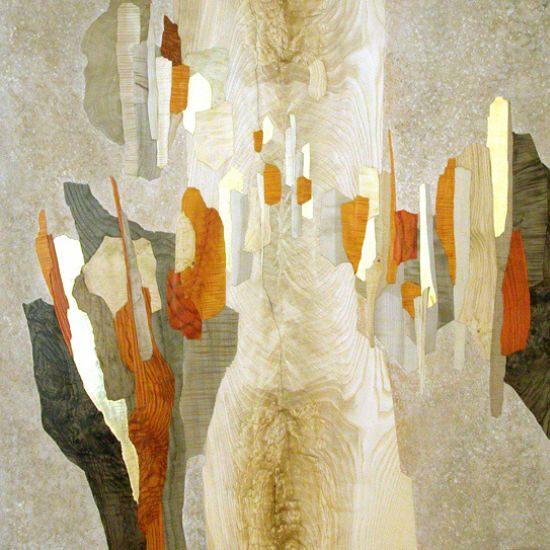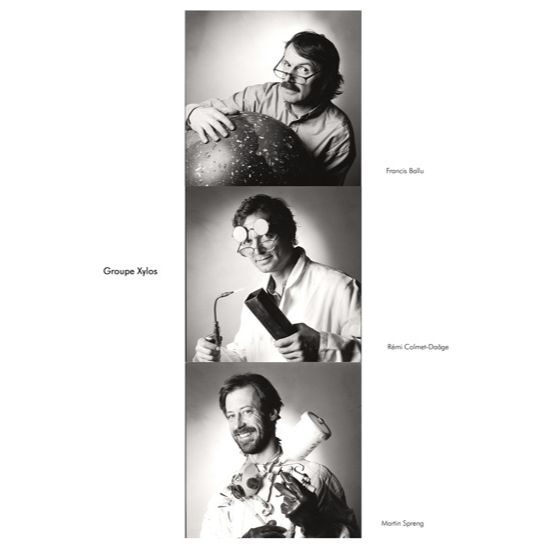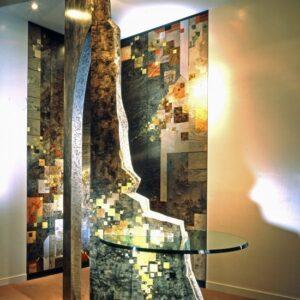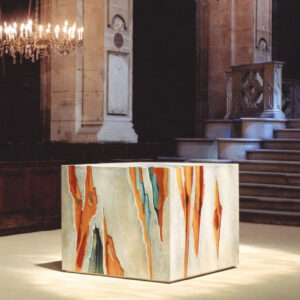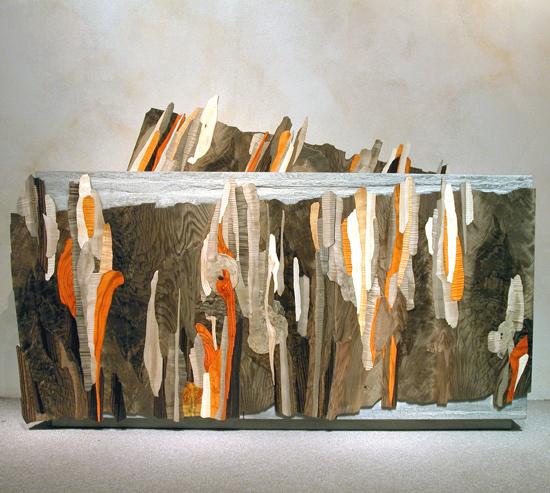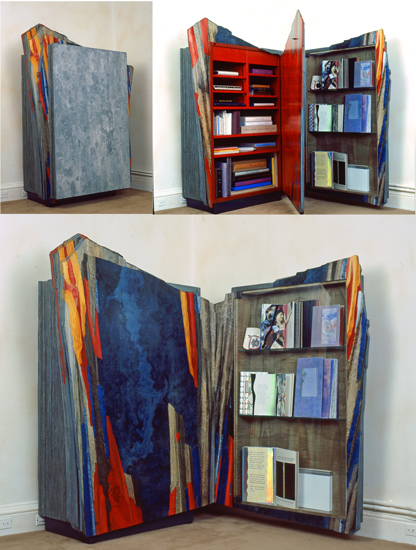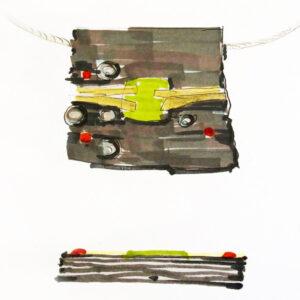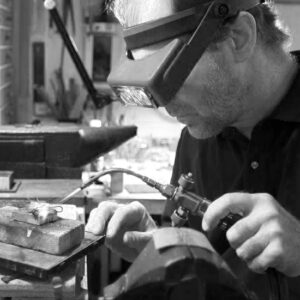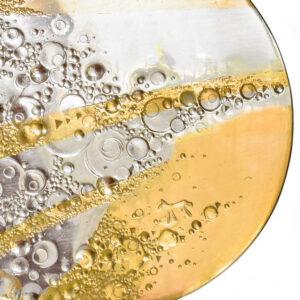About Martin Spreng

Son of German sculptor Blasius Spreng, Martin spent uncountable hours in his father’s studio. He is also the grandson of a wood-sculptor and of an architect on his mother’s side. So how could he not embark upon a creative path?
THE FATHER’S LEGACY
Curiously, as an adolescent – and perhaps looking to escape the influence of his father – Martin chose to study biochemistry, a subject that quickly proved too abstract for his manual-focused creative character. Perhaps the apple never falls far from the tree because he then began walking in his father’s footsteps. It is to be noted that Martin’s father, before passionately embracing sculpture, exercised the profession of… jewelry designer!
“Throughout my childhood, I saw fine gold jewelry being created and crafted. My father designed the pieces and then had them made by goldsmiths”
At a crossroads, Martin Spreng hesitated awhile between doing a goldsmith internship or moving closer to the sculptural activities of his elder. After much thought – and motivated by the appeal of expressing his creativity on much larger surfaces than the minuscule ones of jewelry – he opted for wood-working and began apprenticing in a Munich-based ebenist studio where he spent two enriching years before setting out for France.
France was already a familiar place to him, thanks to his francophone and franco-fan grandmother whose enthusiasm had inspired Martin to graduate from French-language high school. He had also spent many vacations in France since adolescence.
“So many elements that paved the way for him to integrate two of the most renowned woodworking studios in the historical Faubourg Saint-Antoine furniture-making quarter. Taught by veritable masters, he learned all the trade secrets of making state-of-the-art copies of antique furniture and notably how to sculpt and inlay wood: two disciplines he was soon to master.”
Philippe Dayan
A long career in wood-carving
In Paris, he crossed paths with Francis Ballu, a woodworker awarded Best Artisan of France and Rémi Colmet Daâge, an architect and also an ébénist. A professional love-at-first-sight that led them to associate their creativities and skills under the banner of GROUPE XYLOS (wood in greek).
The trio was soon joined by a fourth partner, Philippe Delaflotte, who stayed for ten
years. Before long, they had carved out a solid reputation and were commissioned by
various international collectors and institutions. Their unique (one-off) furnishings and decorative murals, influenced by contemporary art aesthetics, established the signature lines and inlay work Xylos became famous for.
Today, one can admire a Xylos wall-panel in the Great Chamber of the Paris City Hall, or
a bas-relief commissioned by Cartier in the city of Aix-les-Bains as well as two large mural art decorations at the Stuttgart Convention Center, among others.
The flourishing Xylos activity never kept Martin Spreng from making jewelry on the side: first in wood, and then in gold for the last fifteen years. During this gradual shift, he undertook the study of jewelry-making at the Nicolas Flamel school where he acquired the various techniques of fine jewelry, including stone-setting and gemology. Still, he never imagined that he would one day leave woodworking altogether and dedicate himself exclusively to jewelry-making!
THE CALL OF JEWELRY
In 2007, Martin Spreng organized his first jewelry exhibit, featuring a dozen pieces made exclusively of gold. He explains:
“At that time, I didn’t particularly care for diamonds and other precious gems. It was only when I ventured deeper into jewelry that I slowly began to know and appreciate them.”
Particularly attracted to aquamarines, chrysoberyls, opals and rubies, he who never completely defines a creation from the start – due to his constant interventions on materials, much like a sculptor (which earned him the nickname of Gold-sculptor in Germany) – begins by choosing the stones based on the creative impetus they inspire. Never mind if certain gems have a flaw or an inclusion: this only makes them more unique and means they have something extra-special to offer!
It has taken Martin Spreng 10 years to elaborate his designer-jeweler world, where he set out to uphold the driving philosophy of Xylos: making each creation a one-of-a-kind piece. His jewelry is sold either directly to private clients or in specialized galleries, like that of Elsa Vanier in Paris, Slavik in Vienna, Scheytt in Munich and Mobilia in Boston.
This one-off approach didn’t however prevent him from exploring a mini-series of jewelry crafted in ebony and silver inspired by his earliest creations. Not mainstream, but at more accessible prices than those of his extraordinary unique pieces.
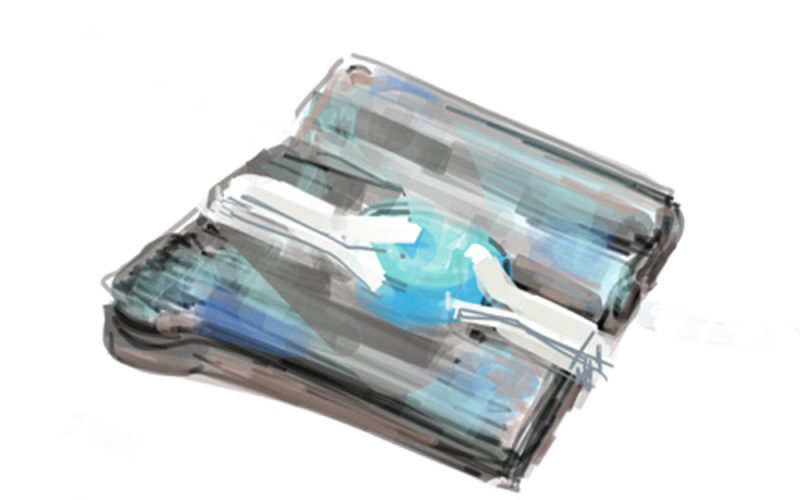
MARTIN SPRENG, A CERTAIN STYLE
Heir to a legacy of fine jewelry expertise, ébénist woodworking and the Fine Arts, Martin Spreng leaves, here and there on his jewelry, small winks at his life-path(s). For example, the technique inherited from an old Munich workshop via his father, which he symbolizes with the workshop’s stamp: a little goat he has safeguarded through the years . Or again, the way he approaches jewelry – which is the same way he envisaged wood design in the Xylos collective from 1981 to 2011. An approach that clearly transpires through the way he associates materials.
One notes a character trait in Martin Spreng: that of keeping a close eye on his origins – if only to better surpass them! When he transcribes a melody to decorate a wedding band, it is by engraving squares and rectangles reminiscent of German composer Stockhausen and the graphic notations of his “Piano Pieces” suite….
And although he willingly uses gold, silver and precious gems, he will want to glorify them by introducing titanium into the design. Titanium for its limitless nuances and ruggedness, but also for its lightness – which makes the pieces more wearable. A harmonious study of use, meaning, spirit and matter.
Martin Spreng’s creations are never intentionally figurative, yet much as for abstract- lyrical painters, they always seem to evoke Nature – in its cosmic, telluric or biological dimensions. Offering his own contemplation of the world in a poetic way, somehow reminiscent of Ralph Waldo Emerson’s founding essay “Nature”.
Certainly one the reasons that Martin Spreng’s jewelry always gives off a deeply lyrical vibe: the richness of shapes, the playful confrontations (colors, volumes, genres, patterns) seem to elicit a sense of the marvelous and of the dramatic.
One can compare them to the composer Mahler and his “Song of the Earth”. Much as for Mahler, Spreng’s quest for perfection isn’t akin to bare strictness: it is instead placed in the service of exalted representations of harmonious effervescence, of balanced ensembles of interdependent shapes and poetic liaisons sometimes precise to the point of disappearing (cf. the joints of the Xylos Sphere) or fracturing (cf. the gold and titanium combinations of certain rings) like fault-lines running through the designs.
Still, Martin Spreng’s lyricism is always grounded by squares of matter, and their organization. Everything makes sense. The piece of jewelry as a symbol, in resonance with the various materials that are fashioned into reflections of the artist’s thoughts, yet most definitely made to be worn! As if the aspiration to unity were somehow the ultimate quest of the jewelry designer.
One feels tempted to think that Martin Spreng interprets the original meaning of the Greek word Cosmos but takes it into an infinitely tiny dimension: is he inviting us to wear our own little micro-cosmos that has been magically – and most conveniently! – made into a jewel-size?
Mathieu Schlegel

